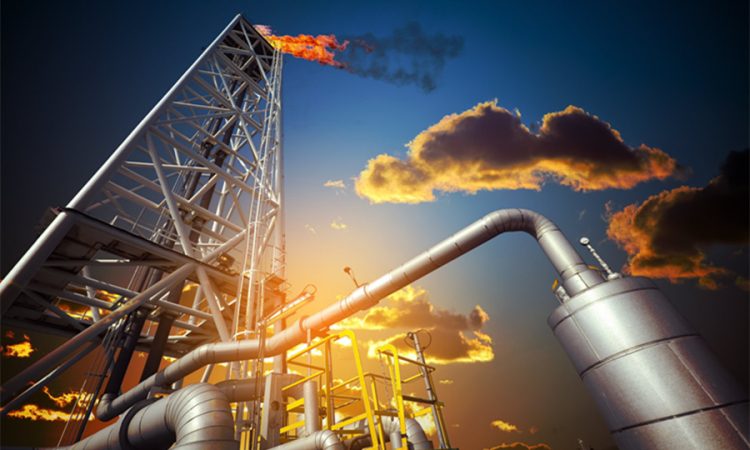Introduction
The European energy crisis has become one of the most pressing economic and geopolitical challenges of the 21st century. Amid a backdrop of increasing political tensions, supply disruptions, and rising demand, energy prices in Europe have soared to unprecedented levels, causing widespread economic distress. This crisis has intensified in recent years due to factors such as Russia’s invasion of Ukraine, the COVID-19 pandemic’s lingering effects, and climate change-driven energy challenges. As a result, European nations face soaring natural gas, electricity, and oil prices, significantly impacting households, businesses, and governments across the continent.
But the repercussions of Europe’s energy crisis extend far beyond its borders. Given the global interconnectedness of markets, the escalating energy prices in Europe are having a profound impact on the global economy, influencing everything from inflation to economic growth forecasts and even shaping the landscape for investment returns. With energy being a fundamental input for almost all economic activity, its sharp price increases are not only straining European economies but also posing risks to the stability of global markets.
This article explores the causes and consequences of the European energy crisis, how soaring energy prices are affecting global economic growth, and how these developments are influencing investment returns worldwide. By understanding these dynamics, investors and policymakers can better navigate the challenges posed by the crisis and anticipate the long-term impacts on markets and industries.
1. The Root Causes of the European Energy Crisis
A. Russia’s Invasion of Ukraine
The most significant factor driving Europe’s current energy crisis is the geopolitical conflict between Russia and Ukraine, which escalated into a full-scale war in February 2022. Before the conflict, Europe was heavily reliant on Russian energy supplies, particularly natural gas. Russia provided approximately 40% of Europe’s natural gas and a significant share of its oil imports. The war has led to significant disruptions in the energy supply chain, as Russia has drastically reduced or completely cut off its natural gas exports to many European countries in retaliation for sanctions and support for Ukraine.
This reduction in supply has caused European gas prices to spike, as countries scramble to secure alternative sources of energy. At the same time, the war has pushed European governments to find ways to support Ukraine financially and militarily, further straining budgets already under pressure due to pandemic-related expenditures.
B. The Transition to Renewable Energy and Environmental Policies
Europe has long been a leader in advocating for climate change action and the transition to renewable energy. While these goals are laudable, the shift to greener energy sources, such as wind, solar, and hydropower, has left Europe somewhat vulnerable to energy shortages, especially during periods of high demand or extreme weather conditions. Although renewable energy capacity is growing, it has not yet fully replaced the fossil fuel infrastructure, leading to a situation where Europe is caught between energy dependence on non-renewable sources and the transition to cleaner, more sustainable alternatives.
The continent’s reliance on intermittent renewable energy sources like wind and solar has meant that energy security is increasingly tied to weather patterns. For example, a cold winter or a summer with little wind can drastically reduce energy availability. These vulnerabilities have been exposed in the face of the energy crisis, as the lack of a robust energy storage system means that Europe’s energy supply is far from reliable during times of peak demand.
C. Supply Chain Disruptions and Global Demand Shocks
The COVID-19 pandemic caused severe disruptions to global supply chains, affecting the availability of energy resources, both in Europe and globally. As economies reopened in 2021 and 2022, there was an increase in demand for energy, which put pressure on supply chains that had already been weakened by the pandemic. The sharp rise in demand for natural gas, coal, and oil has exacerbated the energy crisis, particularly as many energy producers have struggled to increase output in response.
Furthermore, Europe’s energy crisis is compounded by global supply chain bottlenecks, which have prevented new energy infrastructure from being developed quickly enough to meet growing demand. A lack of storage facilities, limited capacity for liquefied natural gas (LNG) importation, and delays in the transition to alternative energy sources have left European markets highly vulnerable.
2. The Economic Impact of Soaring Energy Prices
A. Inflationary Pressures
One of the immediate consequences of skyrocketing energy prices is inflation. As energy costs rise, businesses are faced with higher production costs, which they often pass on to consumers in the form of higher prices for goods and services. The energy crisis has caused inflation to surge not only in Europe but also in other regions of the world that are tied to global supply chains.
- Higher Household Costs: For households, soaring energy prices mean higher heating, electricity, and fuel bills, placing significant pressure on disposable incomes. This leads to a reduction in consumption, especially for lower-income households that spend a larger portion of their income on energy and basic goods.
- Cost-Push Inflation: In addition to higher consumer prices, businesses are grappling with increased costs for everything from transportation to manufacturing. These inflationary pressures can contribute to reduced profitability, particularly for energy-intensive industries such as chemicals, metals, and logistics.
B. Impact on Industrial Production and Economic Growth
High energy prices are particularly challenging for energy-intensive industries. Many European manufacturers, particularly in sectors like steel, cement, chemicals, and automotive, have been forced to reduce production or even shut down operations temporarily due to unaffordable energy costs. These industries are not only critical to Europe’s economy but are also globally integrated, meaning disruptions in European manufacturing have global ripple effects on supply chains and trade.
- Reduced Competitiveness: As production costs rise, European goods become more expensive relative to those produced in other regions, particularly in Asia and the U.S. This reduced price competitiveness puts European exporters at a disadvantage and could contribute to a decline in European export performance.
- Slowdown in Economic Growth: As industries cut back on production and consumers face higher costs of living, overall economic growth slows down. For many European economies, the threat of recession has become a real concern. In particular, countries like Germany, which are highly reliant on energy-intensive industries, have seen growth forecasts revised downward.
C. The Strain on Government Budgets and Fiscal Policy
Governments across Europe are stepping in to support businesses and households through the energy crisis. This has led to substantial fiscal expenditure in the form of energy subsidies, social support packages, and stimulus measures aimed at mitigating the impact of high energy prices. However, this is putting a significant strain on national budgets, leading to concerns about rising public debt levels.
For example, countries like France, Italy, and Spain have rolled out massive energy relief packages to shield consumers from the worst effects of soaring energy prices. These measures are necessary to prevent social unrest and maintain political stability but may come at the cost of higher public debt. Governments also face the dilemma of balancing the need to support the economy in the short term with long-term fiscal sustainability.

3. Global Implications of the European Energy Crisis
A. Ripple Effects on Global Energy Markets
While Europe is at the center of the current energy crisis, its impact is felt globally. Europe’s reliance on natural gas imports, combined with the ongoing geopolitical tensions, has shifted the global energy balance. In particular, the demand for LNG has surged as European countries try to reduce their dependence on Russian gas. This has created competition with other regions, especially Asia, where countries like Japan and South Korea are heavily dependent on LNG.
As a result, LNG prices have spiked globally, and energy security concerns are rising across the globe. Countries that were previously less reliant on LNG are now competing in the international market, leading to higher energy costs worldwide.
- Impact on Emerging Markets: Emerging markets that rely on energy imports are particularly vulnerable to price hikes. Higher energy costs could lead to higher inflation, slower growth, and potential political instability in these regions, further exacerbating global economic uncertainty.
B. Financial Market Volatility
The European energy crisis has caused increased volatility in global financial markets. The interconnectedness of energy markets with equity, bond, and currency markets means that sharp increases in energy prices have knock-on effects on investor sentiment. The crisis has prompted investors to reallocate capital towards energy stocks, particularly those in the oil, natural gas, and renewables sectors, while pulling back from industries that are heavily dependent on energy inputs.
- Stock Market Volatility: As inflation expectations rise, central banks around the world, including the European Central Bank (ECB) and the U.S. Federal Reserve, are expected to tighten monetary policy to combat rising prices. Higher interest rates could lead to a reduction in asset prices, particularly in equity markets, where high-growth sectors like technology are most vulnerable to tightening financial conditions.
- Currency Fluctuations: Energy prices also affect currency markets, particularly for energy-importing countries. The euro, for instance, has faced downward pressure as concerns about Europe’s economic stability grow. A weaker euro exacerbates inflationary pressures, particularly for countries that rely heavily on imported energy.
C. Impact on Long-Term Investment Returns
While short-term market volatility may offer opportunities for active investors, the long-term effects of the European energy crisis on global investment returns remain more uncertain. Investors will need to adapt their strategies to account for:
- Diversification into Energy Alternatives: Given the volatility in traditional energy markets, long-term investors may consider allocating more capital toward renewable energy, energy storage solutions, and green technologies that are likely to see increased demand as the world transitions to cleaner sources of energy.
- Geopolitical Risks: The energy crisis highlights the growing importance of geopolitical risk in investment decisions. Investors may need to rethink their exposure to countries that are heavily reliant on energy imports or have uncertain energy security.
4. Conclusion: Navigating the Energy Crisis in a Globalized Economy
The escalating energy crisis in Europe presents significant challenges not only for the continent but also for the broader global economy. Soaring energy prices have pushed inflation to levels not seen in decades, slowed economic growth, and created widespread financial market volatility. However, while the short-term impact of these developments is negative, there are also opportunities for long-term investment in energy transition technologies and diversification strategies.
For investors, this crisis underscores the importance of strategic diversification and being attuned to geopolitical risks. The European energy crisis is far from over, and its global implications are likely to persist in the coming years. By understanding the multifaceted nature of this crisis and adapting investment strategies accordingly, investors can better navigate the uncertainties ahead.
As Europe continues to transition to cleaner energy sources while managing the immediate challenges of high energy prices, the global energy landscape will likely undergo profound changes. The path forward will require careful consideration of both economic and environmental factors, as well as collaboration across nations to achieve a sustainable and secure energy future.

















































